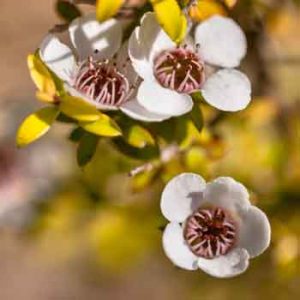
More evidence that low-calorie sweeteners are bad for your health
Studies show that artificial sweeteners can raise the risk of hypertension, metabolic syndrome, type 2 diabetes and heart disease, including stroke.

Natural Health News — Australian manuka honey is at least as powerful against bacteria as the more commonly known New Zealand variety, researchers have found.
A team from theUniversity of Technology Sydney (UTS) has studied more than 80 honey samples from New South Wales and Queensland flowering manuka (Leptospermum) trees and found the nectar-derived chemical that gives NZ manuka honey its unique antibacterial properties is present in Australian varieties.
The new research, published in The findings are published in PLOS ONE, also shows the antibacterial properties of honey remain unchanged over several years when stored appropriately.
» Manuka honey from New Zealand has long been proven to have important medicinal and anti-bacterial properties.
» New research shows that honey produced from manuka plants in Australia is at least as powerful in terms of antibacterial action.
Long lasting protection
“These findings put Australian manuka honey on the international radar at a time when antibiotic resistance is recognised as a global crisis,” said Dr Nural Cokcetin, of the ithree institute at UTS, a lead author of the study which also includes collaborators at the University of Sydney and the University of the Sunshine Coast.
“All honeys have different flavours and medicinal properties, depending on the flowers bees visit for nectar. What makes manuka honey so special is the exceptionally high level of stable antibacterial activity that arises from a naturally occurring compound in the nectar of manuka flowers. It’s the ingredient we know acts against golden staph and other superbugs resistant to current antibiotics.
“Our study provides the proof for what we’ve long assumed – that this compound, methylglyoxal (MGO), is present in high levels in Australian manuka honeys. We’ve also shown that the activity of Australian manuka honeys has remained unchanged over seven years from harvest, which has huge implications for extending the shelf life of medicinal honey products.”
A boost for beekeepers
The findings are described as a game-changer for Australian beekeepers, who stand to benefit from the lucrative medicinal honey market, and clinicians seeking treatments for resistant skin infections and chronic and acute wounds.
While honey has been used therapeutically for hundreds of years, the growing global crisis of antibiotic resistance has revived interest in its clinical use. New Zealand is the primary source of medicinal honey but the country grows only one Leptospermum species, and its honey bee population is threatened by the parasitic varroa mite.
Australia is home to 83 of the 87 known Leptospermum species and is still free of the varroa mite, unlike the rest of the beekeeping world.
There are about 12,400 registered beekeepers in Australia, and about 200,000 hives used for commercial pollination and honey production. The industry produces up to 30,000 tonnes of honey annually.
“Honey not only kills bacteria on contact but we have shown previously that bacteria don’t become resistant to honey” said Professor Liz Harry, director of the ithree institute at UTS and another lead investigator of the project.
“That the manuka varieties in Australia are just as active as those in New Zealand, and have essentially the same chemical profile, will add significant value to Australian honey for beekeepers and provide a plentiful supply of medicinal honey.”
Honey Bee & Pollination R&D Program spokesperson Michael Hornitzky said the findings could see the value of Australian honey increase significantly in future.

Please subscribe me to your newsletter mailing list. I have read the
privacy statement